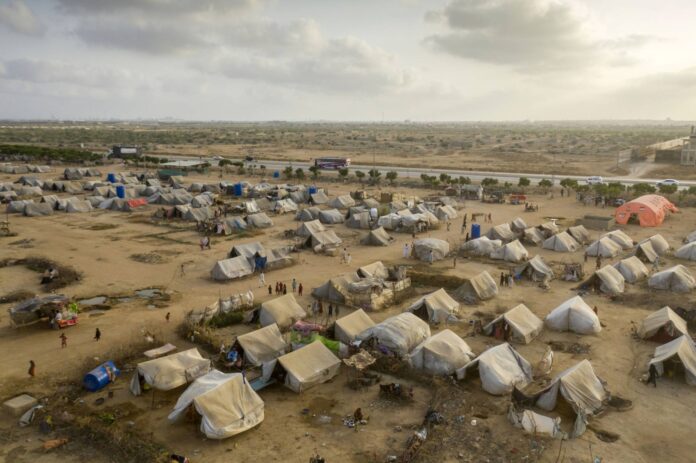When the water finally receded after the 2022 floods, it left behind more than just destruction. It revealed a growing reality that Pakistan must now confront head-on: entire communities, once rooted for generations, had been forced to move, not because of conflict or opportunity, but because the climate no longer allowed them to stay. With over eight million people displaced and 33 million affected, the floods exposed how climate change is not only a crisis of weather, but also of mobility, governance, and preparedness.
The question now is not whether people will move because of climate change; they already are doing so. The more urgent question is whether the country is ready to manage this movement in a way that is inclusive, planned, and resilient. Climate migration, far from being an inevitable tragedy, can be addressed through proactive governance and policy foresight. With the right institutions, regulations, and coordination in place, migration can become a legitimate adaptation strategy rather than a source of distress.
Globally, the World Bank projects that more than 216 million people may be displaced internally due to climate impacts by 2050. Pakistan, with its diverse geography and high vulnerability, finds itself in the direct path of this trend. In districts such as Tharparkar, prolonged drought has pushed families toward urban centres or more fertile regions, reshaping demographic and economic patterns. Similarly, in coastal Sindh, rising sea levels and the degradation of mangrove ecosystems are compelling communities to abandon ancestral homes. These movements, while often necessary, bring to light new planning and service delivery challenges in areas receiving these populations.
It is encouraging to note that Pakistan has already laid important groundwork through policy instruments like the Climate Change Act of 2017 and the National Climate Change Policy. These initiatives reflect a clear recognition of environmental threats and a desire to act decisively. From here onward, there is an opportunity to expand this commitment by developing responses that directly consider climate-induced migration as an integral part of adaptation strategy.
A promising direction could be the formulation of a national policy framework specifically addressing climate migration. Such a framework can help define the rights and responsibilities of climate-displaced persons, establish durable solutions, and provide administrative clarity to agencies involved. Embedding migration considerations into the National Adaptation Plan would further help align resources, strategies, and programme design to evolving population dynamics.
Climate migration is a multifaceted issue, shaped by environmental, economic, and social factors. Governance, therefore, must be equally multifaceted; inclusive, adaptive, and responsive. With a concerted focus on planning, institutional strengthening, and community engagement, Pakistan can shape a model of climate resilience that not only addresses displacement, but also builds the foundation for long-term sustainability.
Additionally, as the effects of climate change cut across regions and sectors, coordination among federal, provincial, and district levels becomes increasingly important. From this point on, mechanisms that promote joint planning and shared data systems can help ensure that policies are coherent and inclusive. For example, inter-governmental platforms involving the Ministry of Climate Change, disaster management authorities, and planning departments could enhance communication and streamline interventions.
Enhancing local government capacity is equally vital. In regions experiencing population shifts due to environmental stress, better data collection, participatory planning, and early warning systems can lead to quicker and more targeted responses. Projects supported by international organizations have demonstrated how capacity building can empower local institutions to monitor climate impacts and develop relevant solutions. Expanding such efforts will be beneficial as climate variability continues to influence livelihoods and settlement patterns.
At the same time, attention must be given to reducing the need for involuntary migration through rural resilience investments. Initiatives such as the Living Indus platform already provide a model for integrating ecosystem restoration with climate planning. By supporting infrastructure development, sustainable agriculture, and water management in climate-sensitive areas, it is possible to make communities more capable of withstanding shocks and less likely to relocate under distress.
Urban areas also have an important role to play in this evolving landscape. Cities often become the destination for climate migrants, and their ability to absorb new populations depends on how inclusive and forward-looking their planning systems are. From here on, city governance that incorporates migrant needs into housing, public services, and employment strategies can transform challenges into opportunities for growth and cohesion.
Financial resources will be central to these efforts. Pakistan has received significant international pledges in support of its climate resilience agenda. Ensuring that these funds are channeled through transparent, accountable, and well-coordinated systems will help enhance their impact. Linking climate finance to frameworks that recognize the human dimension of climate change, including migration, will create more sustainable and equitable outcomes.
The road ahead is complex but also filled with potential. Climate migration is a multifaceted issue, shaped by environmental, economic, and social factors. Governance, therefore, must be equally multifaceted; inclusive, adaptive, and responsive. With a concerted focus on planning, institutional strengthening, and community engagement, Pakistan can shape a model of climate resilience that not only addresses displacement, but also builds the foundation for long-term sustainability.”























